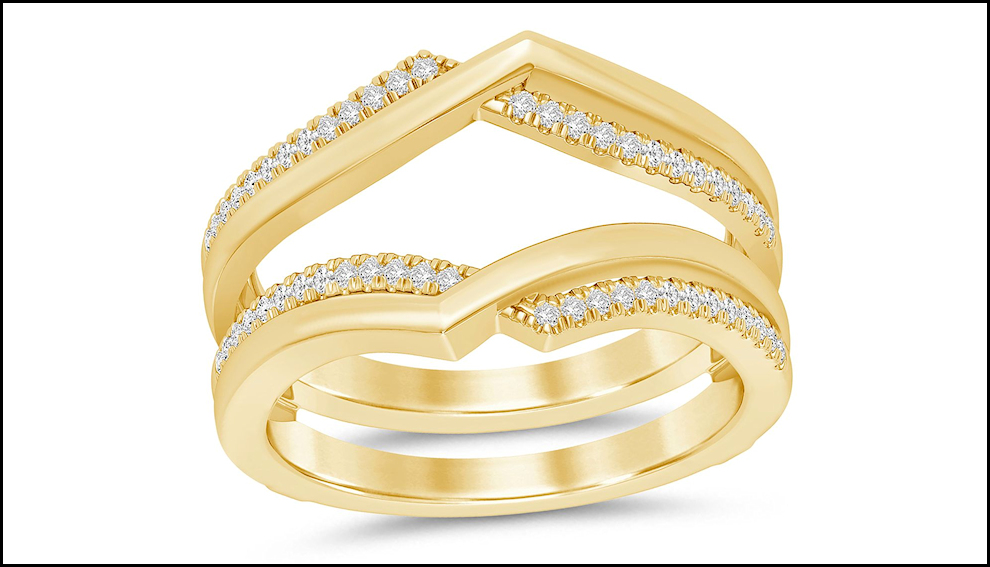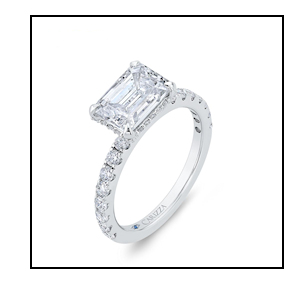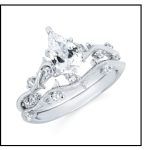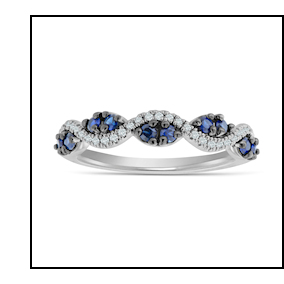Putting a Ring on It
Data from The Plumb Club Industry & Market Insights report released this spring shows that classic engagement ring looks still reign supreme among the marriage minded. Round diamonds remain the most popular type of engagement ring center—with ovals continuing to increase in desirability—and yellow gold mountings are once again growing in acceptance. The average total carat weight of engagement rings is 1.5 carats, with about 25% of those surveyed saying they have an engagement ring exceeding 2.0 carats total weight in diamonds.
Lab-grown diamonds, meanwhile, have skyrocketed in the bridal category, with diamond industry analyst Edahn Golan claiming they account for about 60% of bridal sales at specialty jewelers. And according to BriteCo. Jewelry Insurance, lab-grown diamond increased nearly 10% in popularity among engagement ring buyers from 2020 to 2021, representing a market share of 28.4%.
Many Plumb Club members recognize these trends and are providing retail clients with appropriate engagement ring options.
In classics, solitaire settings, halo, and double—and even triple!—halo styles, centers with baguette-cut side stones, and antique-inspired numbers are moving, according to those interviewed.
After classics, thinner and daintier settings are most desirable, followed by yellow gold—a stark contrast to white gold’s longstanding market dominance.
At Ostbye, other trends of note include leaf motifs and ring wraps or inserts. “[The latter] have been doing very well and give a custom look to existing engagement rings,” says Theresa Namie, merchandise manager.
Inserts or ring jackets are another notable category for Goldstar Jewellery. The company unveiled myriad new designs, including a number in yellow gold, at JCK Las Vegas this year. “Our sales of yellow gold are equal to white gold,” Steven Lerche, chief operating officer, told The Plumb Club shortly after the Las Vegas Show ended. “Yellow gold remains at a peak,” confirms Neil Shah, executive vice president, Shah Luxury.
In center stone shapes, fancies like pears, marquise, emerald cuts, and cushions are hot. “Many brides are attracted to the antique feel of [cushions] combined with new modern cutting techniques that give newer cushions improved brilliance,” explains Surbhi Jain, marketing director, Shefi Diamonds.
Ovals, too, are in demand. Why? A larger perceived look by the consumer. “The average 1 carat oval diamond has a 10% larger surface area than the average 1 carat round diamond, making the oval appear larger,” adds Jain.
Then there’s the matter of center stone sizes and lab-grown and alternative gemstone options. For sure, many Plumb Club members are fielding requests for rings to accommodate larger center stones, be it a colored gemstone or a lab-grown diamond. “In our Forever Elegant line, we use all peghead centers so it’s easy to change the center diamond,” says Namie.
The price-to-size realities of lab-grown diamonds—bigger stones for less money—remain attractive to consumers, despite unknowns about future values, while alternative center gems like sapphires and emeralds are another choice for some consumers.
Among those who want to stick with a diamond—whether mined or lab grown—retailers are doing their best to explain the differences.
“Many retailers are asking for pricing for lab-grown options, but most end up with natural diamonds for their design,” says Rick Mulholland, sales associate, Novell Design Studio. “If the price of the natural diamond is an issue, many ask for smaller diamonds.”
Shah sees a similar trend. “We are starting to identify a reaction that curves to natural,” he says. “Shah Luxury anticipates an inverse curve transition in the coming months to year as bridal customers settle into the new industry.”











